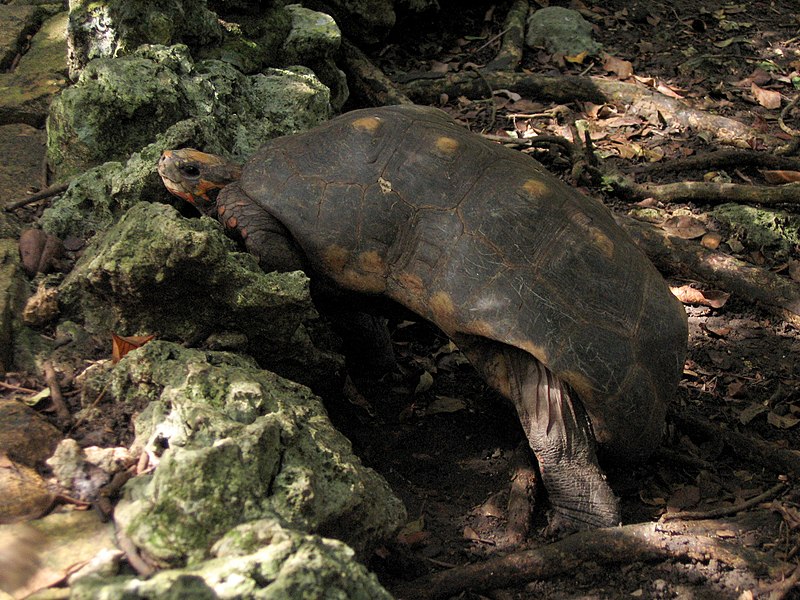 Looking much like a waterlogged root, Southeast Asia’s Tentacled Snake (Erpeton tentaculatum) is one of the few fully aquatic serpents available to pet keepers. This fascinating creature is unique among snakes in possessing a pair of scaled tentacles sprouting from its head…the function of which has puzzled herpetologists for more than a century. Read More »
Looking much like a waterlogged root, Southeast Asia’s Tentacled Snake (Erpeton tentaculatum) is one of the few fully aquatic serpents available to pet keepers. This fascinating creature is unique among snakes in possessing a pair of scaled tentacles sprouting from its head…the function of which has puzzled herpetologists for more than a century. Read More »
Category Archives: Recent Research
Feed SubscriptionAmphibian News – Bacteria Offers Immunity against Deadly Chytrid Fungus
 A bacterium that naturally occurs on the skin of certain frogs and salamanders has been shown to protect these animals from infection by a deadly Chytrid fungus infection. Chytrid fungus, known as Batrachochytrium dendrobatidis, has been very much in the news since its discovery in 1999. It is believed to have caused the extinction of up to 200 amphibian species, and is still spreading in many countries. Read More »
A bacterium that naturally occurs on the skin of certain frogs and salamanders has been shown to protect these animals from infection by a deadly Chytrid fungus infection. Chytrid fungus, known as Batrachochytrium dendrobatidis, has been very much in the news since its discovery in 1999. It is believed to have caused the extinction of up to 200 amphibian species, and is still spreading in many countries. Read More »
Reptile Intelligence – Red-Footed Tortoises Learn by Imitation
 Reptile enthusiasts have long known that tortoises are highly intelligent, and quickly modify their behaviors to meet new challenges. Recent work at the University of Vienna (Biology Letters, March, 2010) has broken new ground in this area. Red-Footed Tortoises (Geochelone carbonaria) have provided us with the first example of “social learning by imitation” in a reptile.
Reptile enthusiasts have long known that tortoises are highly intelligent, and quickly modify their behaviors to meet new challenges. Recent work at the University of Vienna (Biology Letters, March, 2010) has broken new ground in this area. Red-Footed Tortoises (Geochelone carbonaria) have provided us with the first example of “social learning by imitation” in a reptile.
Learning by Doing
In the experiment, a hungry Red-Footed Tortoise was presented with a dilemma – in order to reach its food bowl, the tortoise needed to negotiate a screen barrier. After a great many unsuccessful attempts to reach the food, the tortoise learned to walk out of the maze and go around the barrier to retrieve its reward. Read More »
Study Hints at Global Snake Population Decline
A recent review of studies involving 17 populations of 8 snake species, including Ball Pythons, Asps, Rhinoceros Vipers and Gaboon Vipers, has raised the alarming possibility that steep declines may be in progress in many countries. While it is too early to draw conclusions, this news is disturbingly similar to the origins of the global amphibian decline first uncovered in 1990.
Ominous Findings
The most frightening aspect of the study is the fact that unrelated snake species in widely varying habitats and locations (Italy, Nigeria, France, Australia) were involved. Some of the largest declines – 90% in several cases – were recorded in protected areas. Much like the extinction of the Golden Toad, which disappeared from a pristine cloud forest in Costa Rica, these mysterious declines point to causes that are difficult to identify and remedy. Read More »
New Form of Communication Revealed – Plant-Vibrating Red-Eyed Treefrogs
 Herpetologists at Panama’s Smithsonian Tropical Research Institute have uncovered a here-to-fore unknown form of communication among frogs. Using robotic frogs, infra-red lights and accelerometers, they have established that male Red-Eyed Treefrogs (Agalychnis callidryas) compete by shaking their bodies, which in turn vibrates the plant stems upon which they are perched.
Herpetologists at Panama’s Smithsonian Tropical Research Institute have uncovered a here-to-fore unknown form of communication among frogs. Using robotic frogs, infra-red lights and accelerometers, they have established that male Red-Eyed Treefrogs (Agalychnis callidryas) compete by shaking their bodies, which in turn vibrates the plant stems upon which they are perched.
Vibration Contests
Writing in the May 20, 2010 edition of Current Biology, researchers speculate that the vibrations sent through plant stems enable other male frogs can access the plant shaker’s intent, size and status. It appears that the frogs’ vocal calls may also vibrate plants, but further research is needed.
Additional studies are also being planned to determine if other herps, birds or mammals utilize vibration-based communication (invertebrates are known to do so). Read More »
 That Reptile Blog – Reptile, Amphibian and Exotic Pet Care and Information
That Reptile Blog – Reptile, Amphibian and Exotic Pet Care and Information
